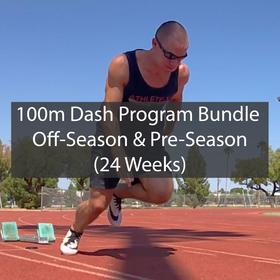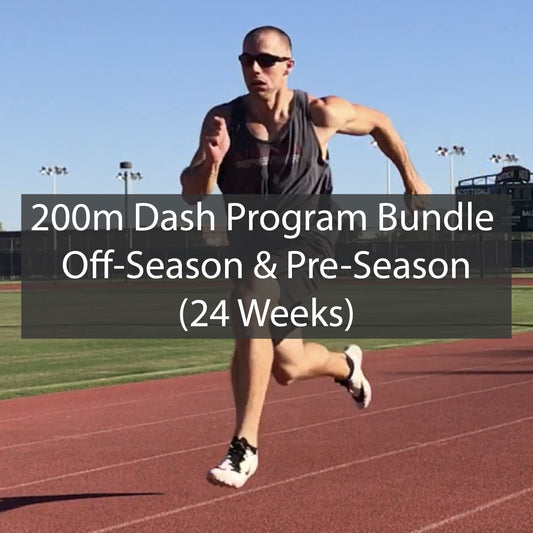200m Dash Training For Sprinters
200 Meter Dash Training - Sprinting Workouts
To run the 200m dash, sprinters must train a range of qualities to properly prepare for the varied demands of the 200 meter dash race. While the 60 meter and 100 meter dash races are based on pure acceleration, speed, and some speed endurance, the 200 meter dash requires superb speed endurance qualities in addition to acceleration and speed capabilities.
Because the body can only adapt to so many different stimuli in a given time period, coaches and athletes must learn to strike a balance between the qualities needed to perform well, and distribute the training for these qualities throughout the program in a way which sends clear signals for adaptation.
Training For The 200 Meter Dash
Though it may seem quick from the outside looking in, the 200m dash race can feel quite long - particularly if your speed endurance is lacking. Sprinting workouts for the 200m dash will generally target:- Sprint capacity and tempo endurance training to develop basic endurance qualities.
- Acceleration, speed, and speed endurance training to develop specific sprint qualities.
- Strength & power training to improve force outputs and prevent injuries.
- Bounding, sprint drills, and other special exercises that are relevant for sprinters.
- Acceleration Training
- Speed Training
- Endurance Training
- Strength & Power Training
- Resisted Sprint Training (Sled Sprints)
- Plyometric Training
Speed Endurance Training For The 200 Meter Dash
Of primary importance to the 200 meter dash sprinter, speed endurance capabilities have a major impact on one's ability to sprint at maximal effort for the full race distance. While 200 meter sprinters certainly need a strong base of speed development, this speed can only translate to faster 200 meter dash times if the athlete has included a significant amount of speed endurance in their sprinting workouts.
Speed Endurance Requires Physiological Fitness
Speed endurance, especially in the 200 meter dash, requires that the body be physiologically capable at handling the stresses that come as a result of running as fast as you can for as long as you can. Because of the energy expenditure and buildup of waste byproducts that result from glycolytic energy systems, the 200 meter dash sprint can be quite painful, especially for athletes who haven't worked on their speed endurance.
Speed Endurance Requires Mental Strength
Beyond the physical and physiological requirements for speed endurance, there is a psychological component that is intimately tied to performance as well. Some athletes experience a fear response when they step up to the line to sprint the half lap race, and others might find that they start out strong but then lose focus and form, exhibiting technique breakdown and a lack of will to finish. By performing speed endurance workouts, sprinters will develop both the physical and psychological strengths needed to excel in the 200 meter dash.Track Workouts For Speed Endurance
Speed endurance training for 200 meter dash sprinters can be broken down into two primary categories: short speed endurance and long speed endurance. 200 meter dash sprinters should perform both short and long speed endurance workouts, that way they can be exposed to stressors that apply to all parts of the 200 meter dash sprint. Additionally, many 200 meter dash sprinters also compete in the 100 meter dash, and as such they can benefit greatly from including short speed endurance work as it applies to both events. A pre-season short speed endurance for 200 meter dash sprinters might look like:
- 1. Track Warmup
- 2. 3-5x70-90m, stopping when the 80m time drops significantly (5%+).
- 1. Track Warmup
- 2. 3x220m with 10-20 minutes rest.
In the event of an injury, excessive fatigue, or limited access to tracks, sprints can perform longer distance heavy sled pulls where they power walk for a given distance or time. While being a general, non-specific version of sled pulling, this is a great way to develop general strength endurance qualities which can benefit athletes, especially when they cannot sprint for one reason or another.
Acceleration Training For The 200 Meter Dash
Acceleration is important for 200m dash performance, though less important compared to the 100m dash. Sprinters must still accelerate to maximal velocity as they do in the 100 meter dash, but must also save some energy by staying relaxed as they accelerate. In general, acceleration training for the 200m dash will be similar to that of the 100m dash.
200m Track Workouts For Acceleration
An example of an acceleration capacity workout that would take place earlier in the year would consist of something like this:
- Track Warmup
- 3x20m, 3x30m, 3x40m Sprints
- 45 seconds rest between sprints
- 4 minutes rest between sets.
- 6x30m Alternate Leg Bounds
- 60 seconds rest between bounds.
In contrast, an example of an acceleration development workout taking place later in the training year would look something like this:
- Track Warmup
- 2x30m, 2x40m, 2x50m all starting in the turn.
- 2:30 minutes rest between sprints.
- 5 minutes rest between sets.
An acceleration development workout that utilizes resisted sprints could be performed in a couple of different ways.
Example 1:
- Track Warmup
- 6x Resisted/Unresisted Sprint Contrasts
- Horizontally Resisted 20-30m (Using heavy resistance, such as 50-80% bodyweight, on a sled)
- Unresisted 40m
- Repeat with 90 seconds rest between sprints, 3 minutes between sets.
Example 2:
- Track Warmup
- 4x Resisted/Unresisted Sprint Contrasts
- 2x Vertically Resisted 40m Sprints (Using a weighted vest at 4-8% bodyweight)
- 1x Unresisted 50m Sprint
- Repeat with 90 seconds rest between sprints, 4 minutes between sets.
Strength & Power Workout For 200 Meter Dash Acceleration
For 200 meter dash acceleration, the exercises used in the gym should be tailored toward developing the body's ability to produce large forces at slow velocities, moderate forces at higher velocities, tissue strength and resilience in various areas, and strength through full ranges of motion.
Heavier, slower lifts can help benefit tendon health and overall strength, whereas faster lifts will be more oriented toward affecting performance outputs such as power and speed.
Strength & power development training for sprinters can look like:
- Squat Jumps - 5x2 @ 30% Bodyweight.
- Bottom Up Split Squat - 3x5 @ 100% Bodyweight or more.
- Standing Calf Iso - 3x10 Seconds @ High Load.
- Heavy Slow Cable Hip Flexion - 3x8 in a forward acceleration position.
Speed Training For The 200 Meter Dash
As discussed, speed endurance is the primary skill that separates 200 meter dash sprinters from other athletes.200 meter dash sprint athletes should incorporate speed training into their programs at all times of the year, with most weeks having 1 or 2 focused speed development workouts.
Earlier in the year, athletes can focus on splitting different characteristics into different workouts.
Speed Training Track Workouts For Maximal Velocity
- Track Warmup
- 4-6x40-50m
- 4-6 Minutes rest between sprints.
- 3x25 Stiff Ankle Hops
In contrast, an example of a speed development workout taking place later in the training year would look something like this:
- Track Warmup
- 6x30m Flying Sprints
- 20-40m Acceleration -> 30m Maximal Velocity Zone
- 5-8 minutes rest between sprints

Online Training Group
Get workouts sent to your phone to help you get stronger, sprint faster, and jump explosively.
Sprint Training Articles
View all-
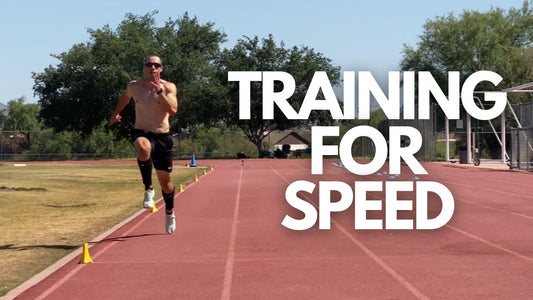
Training For Speed - Methods, Progressions & Ti...
Speed training is fundamentally the primary way to train in order to sprint faster. Social media influencers and coaches throw the term speed training around loosely, when in reality it...
Training For Speed - Methods, Progressions & Ti...
Speed training is fundamentally the primary way to train in order to sprint faster. Social media influencers and coaches throw the term speed training around loosely, when in reality it...
-
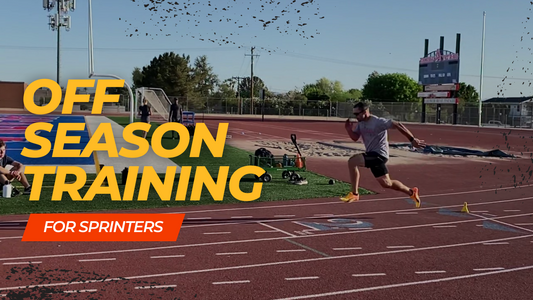
How Should Sprinters Train In Their Off Season?
After a long season of training and competition, many sprinters find themselves wondering what they should do once the season has come to a close. Some continue to train hard,...
How Should Sprinters Train In Their Off Season?
After a long season of training and competition, many sprinters find themselves wondering what they should do once the season has come to a close. Some continue to train hard,...
-
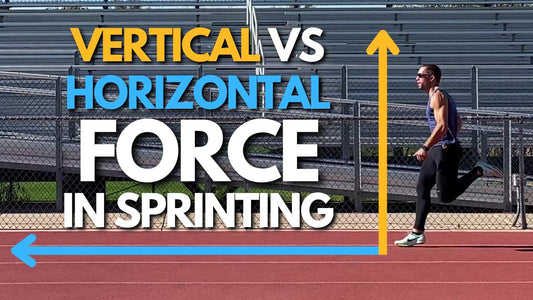
Force Production In Sprinting | Is Vertical Or ...
In discussions surrounding sprint performance, coaches and researchers have debated whether vertical force or horizontal force is more important for running fast. While many will pick a side and claim...
Force Production In Sprinting | Is Vertical Or ...
In discussions surrounding sprint performance, coaches and researchers have debated whether vertical force or horizontal force is more important for running fast. While many will pick a side and claim...
Sprint Training Programs
-
100 Meter Dash Training Program Off-Season & Pre-Season Bundle
Regular price $47.00 USDRegular priceUnit price / per$99.00 USDSale price $47.00 USDSale -
400m Dash Off-Season & Pre-Season Training Program Bundle
Regular price $47.00 USDRegular priceUnit price / per$95.97 USDSale price $47.00 USDSale -
200m Dash Off-Season & Pre-Season Training Program Bundle
Regular price $47.00 USDRegular priceUnit price / per$95.97 USDSale price $47.00 USDSale -
Indoor Off Season Bundle - 60 Meter & 200 Meter Dash GPP Training Programs
Regular price $62.00 USDRegular priceUnit price / per$78.00 USDSale price $62.00 USDSale



